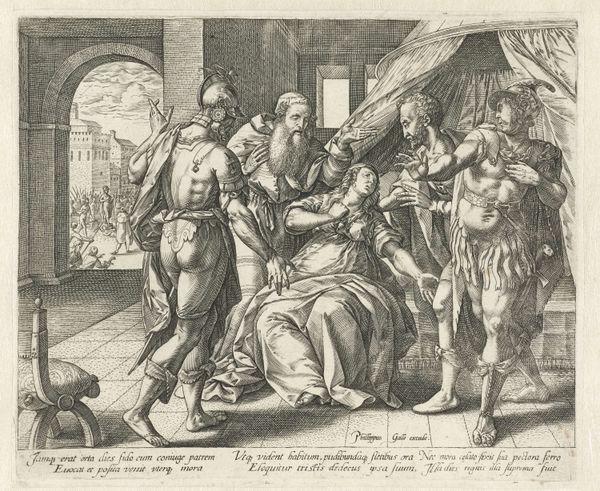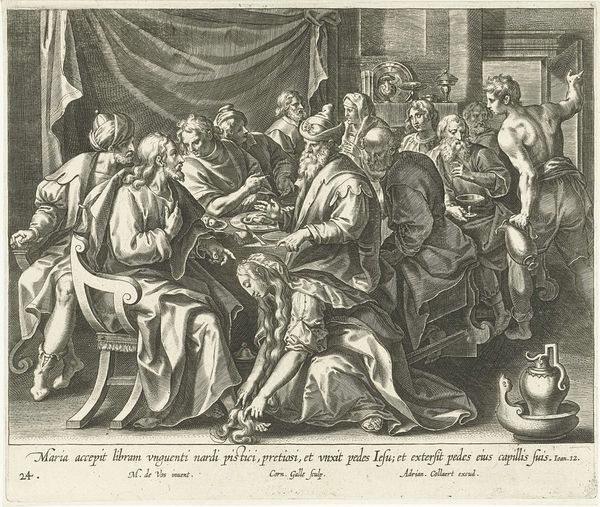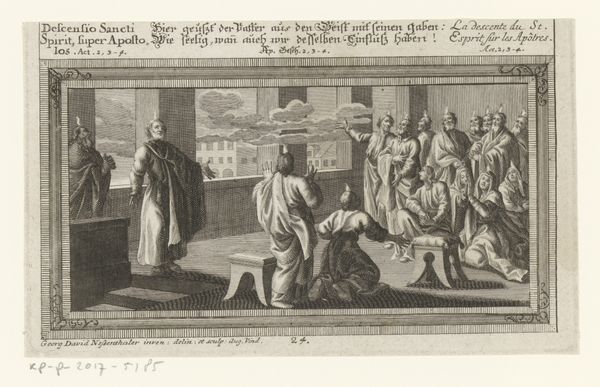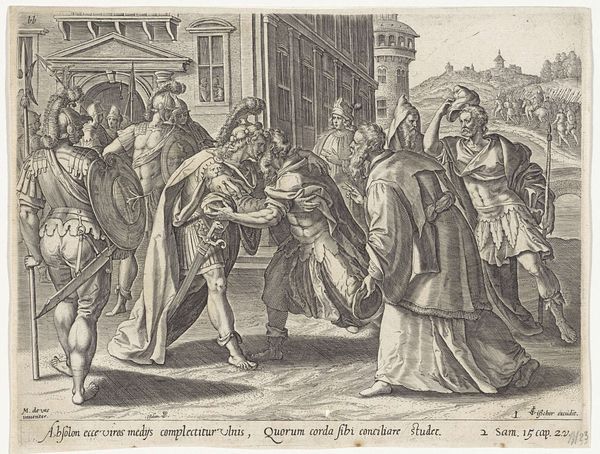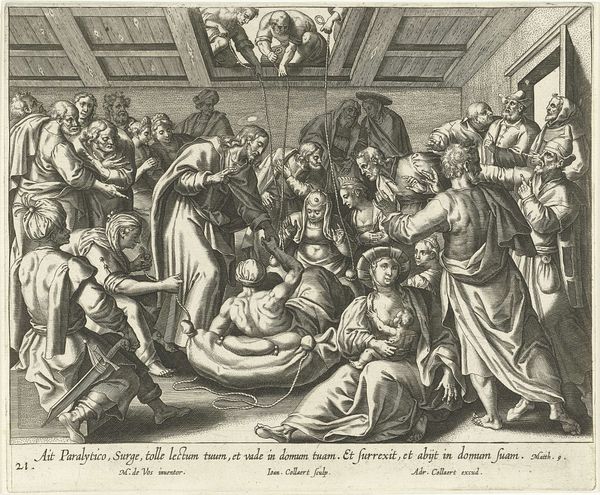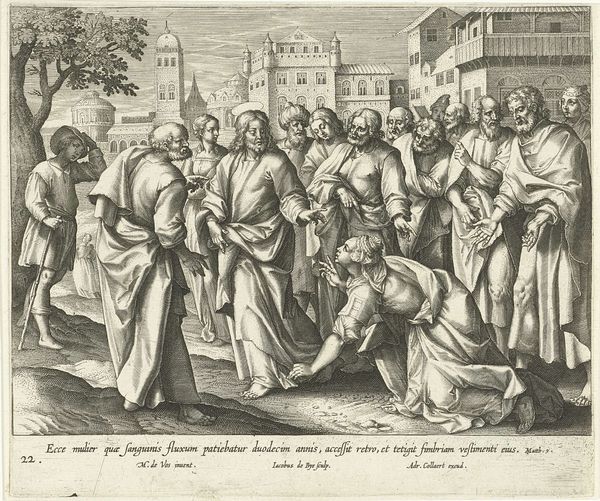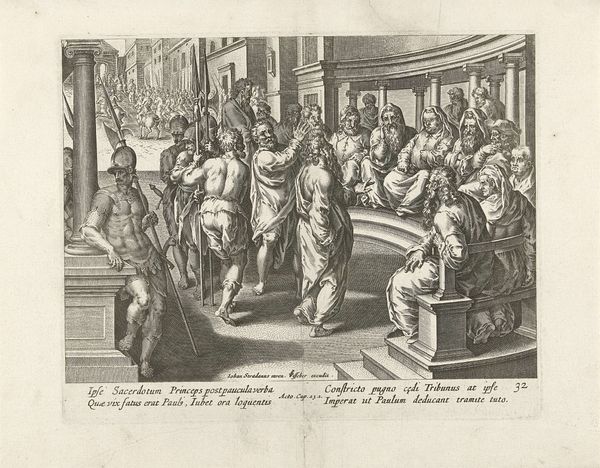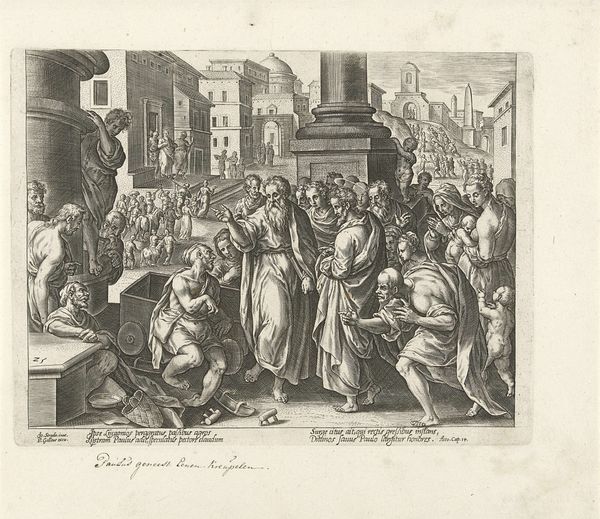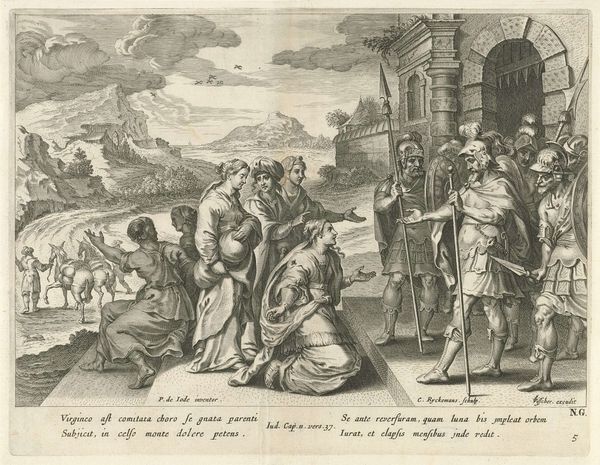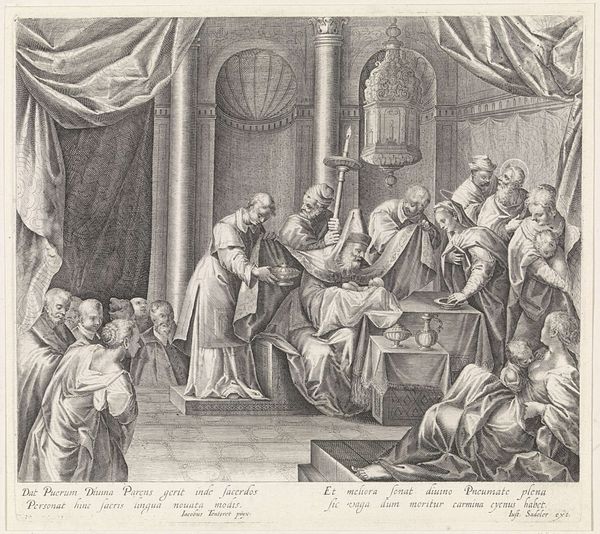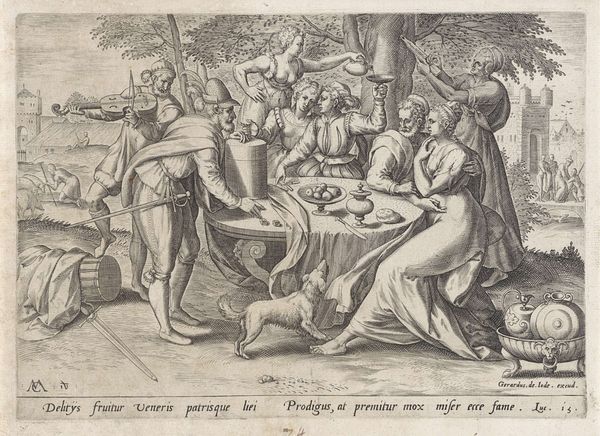
print, engraving
#
baroque
# print
#
figuration
#
history-painting
#
engraving
Dimensions: height 198 mm, width 260 mm
Copyright: Rijks Museum: Open Domain
Curator: Wierix's engraving, created sometime between 1585 and 1643, depicts a pivotal scene titled "Achitophel en Chusai bij Absalom," currently held in the Rijksmuseum. The level of detail achieved through the engraving process is astounding, and it’s all so meticulously rendered in monochromatic tones. What are your initial thoughts on this image? Editor: Well, my immediate reaction is that this feels staged. It looks like a carefully orchestrated power play. There’s Absalom in the center, looking both regal and vulnerable, seemingly caught between competing factions, all vying for his ear, for influence. The theatrical poses and stern facial expressions underscore the gravity and tension within the group. Curator: Absolutely, and the composition lends itself to such interpretations. In art history, engravings like these served various crucial roles. They spread biblical stories to broader audiences and they cemented the roles of art production and image reproduction within a society and in cultural memory. Consider how prints made art accessible beyond the elite patrons. This particular piece visualizes a complex moment from the Bible where Absalom receives conflicting advice on how to deal with his father, King David. Editor: Right. I see that this historical context highlights power, betrayal, and strategy. Absalom's rebellion and reliance on counsel represent political instability. And thinking about its reception then, it prompts questions about the roles of religious art in justifying power structures but also potentially critiquing them, depending on how viewers interpreted Absalom’s actions and motivations. His advisors seem ready to pull him in separate directions to control their stake in Absalom's position. Curator: Precisely. And, stylistically, note the influence of the Baroque, which is identifiable by the dramatic intensity, intricate detailing, and the figures that command the pictorial space. Editor: And I’d like to draw attention to something else, too. Though seemingly secondary, the background scenes show how much upheaval this situation has created, including displaced or running citizens and many soldiers present. The visual representation and the choices made really communicate and shape collective memories of the historical and religious narratives in fascinating ways. The artist had some agenda in mind when making these deliberate decisions, after all. Curator: Certainly. It offers so much more than just a window into a biblical narrative; it reflects the political and cultural landscapes within which it was produced and perceived. Thanks for lending me your sharp and contemporary point of view. Editor: Thanks. Seeing how narratives get visualized across time certainly provides more insight on the people behind those narratives, and what power relations emerge as a result.
Comments
No comments
Be the first to comment and join the conversation on the ultimate creative platform.


